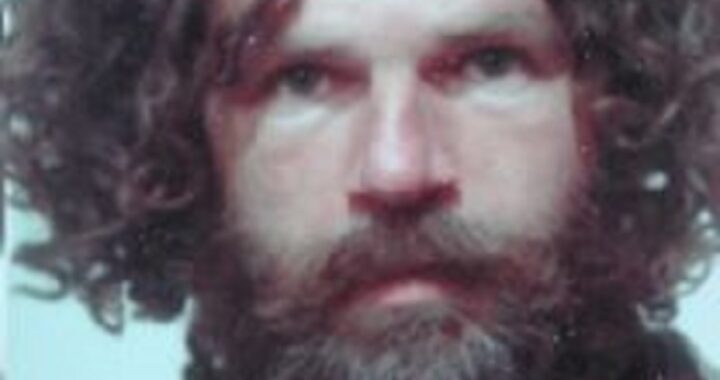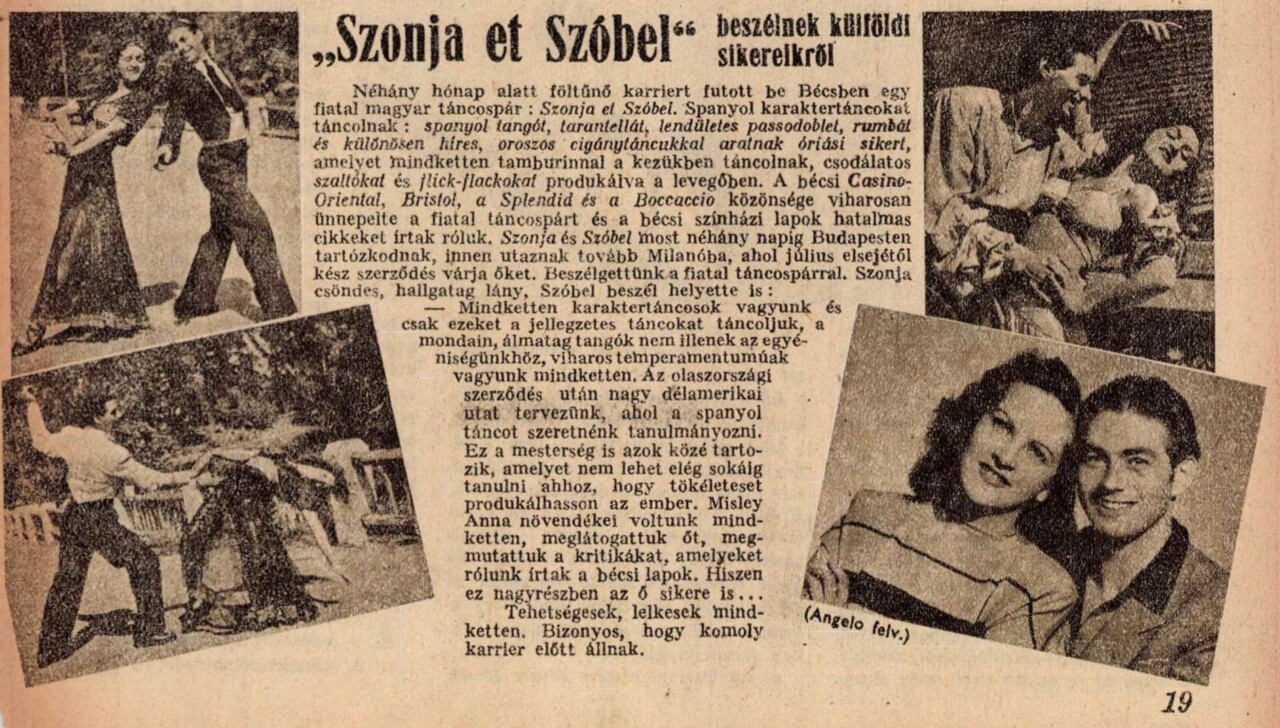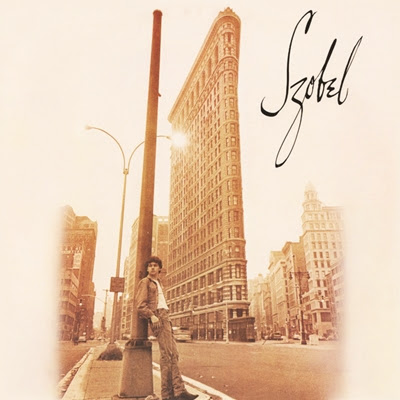How did it all come to this and why does almost no one know Hermann Szobel? The story about the former child prodigy begins in Vienna. He was born there in 1958. His mother Sonia Grajonca met her husband Armin Szobel at a ballet company in Budapest. Once settled in Vienna, the two regularly perform as a dance duo under the name Szonja & Szóbel.
They start recruiting girls for Die Szobel Showgirls, “one of the best modern Tanzgruppen”. That doesn’t go exactly by the book. According to a Hungarian blog about the footballer and later coach Béla Guttmann, Armin and his brother István Szobel are guilty of trafficking in women. They are eventually arrested on suspicion of forging passports and travel permits. Armin Szobel and Guttmann met in the 1950s. Szobel subsequently became associated with the club Benfica as a football agent.
Little Hermann is of course unaware of his father’s shadowy past. When he is about six years old, his mother discovers his exceptional talent for music. He’s allowed to take piano lessons. Spending hours trying to master Chopin. In his teenage years, Hermann discovers records by Keith Jarrett and Frank Zappa. From that moment on he has only one goal in mind: to make it as a musician. And according to him, that can only happen in the United States of America.
Bill Graham
In addition to four sisters, mother Sonia also has one brother. This Wolfgang Grajonca developed into a successful impresario and concert organizer in America in the 1970s. Better known as Bill Graham. After Hermann travels to New York at the age of sixteen, uncle Bill takes his nephew under his wing. He introduces him to the music scene in the metropolis. When he visits a studio where singer Roberta Flack is recording an album, she and her musicians openly wonder who this young guy is. To which he casually replies, “My name is Hermann Szobel and I’m the best pianist you’ve ever heard .”
Of course he is laughed at, but when he takes a seat behind the grand piano, their mouths open in amazement. They realize that they are witnessing an exceptional talent. Roberta Flack speaks highly about the pianist, which later ends up as a quote on the cover of his album. Hermann says that he would like to play with other musicians. One of the attendees, Anthony Jackson, connects him with fellow bassist Michael Visceglia.
Visceglia reaches out to other instrumentalists. A large number of them audition, but with no success. Hermann is demanding and not easily satisfied. It’s only when he has gathered a good group around him that he rents a loft in Manhattan for their daily rehearsals. The sessions last for months. Visceglia even stays overnight. In the meantime, Hermann Szobel has been offered a record contract.
Debut album
In october 1975, they record an album for Arista Records at the renowned Record Plant studio. The endless rehearsals pay off. With apparent ease, they play music that is intricate and virtuoso, playful, unguarded, musically and neurotically. However, this is not an expression of virtuosity; it’s a blend of urban jazz interspersed with thoughtful avant-garde, spontaneously shifting directions while embracing the visionary notion of disregarding genres as much as possible. What immediately stands out is the piano playing: sparkling, determined and idiosyncratic. Not bad for a 17-year-old.
Szobel plays as if his life depends on it. On the back of the album cover we see photos of him sitting at the piano with his upper body exposed. Apart from a few solos, the young composer has meticulously transcribed the music note by note. However, the result appears to mirror his fiery nature. Visceglia discovers that he is quite a hothead and and suffers from tantrums. Despite his age, he’s undoubtedly brimming with talent and intellect, but his emotions seem to be barely under control. Szobel is both embodying and performing pure Sturm und Drang.
When the album “Szobel” is released in january 1976, New York is buzzing with disco, salsa, hip-hop and punk. Additionally, there’s a lively jazz-rock scene. However, the album doesn’t make much of an impact. In fact, it flops mercilessly. While the music might seem like jazz-rock at first glance, the performance sounds strange, elusive and stubbornly unique. There are just a bit too many sounds that aren’t immediately obvious but can be traced back to the centrifugal force named Szobel. Not to mention the other contributions. The vibraphone sounds distorted at times, the bass pops and growls, the saxophone or clarinet cry with joy, drummer Bob Goldman anticipates what Steve Gadd would later do on Steely Dan’s “Aja.”
The record can be listened to as an autobiography trapped in a musical labyrinth. You can almost hear that someone is discovering his surroundings in New York. “Mr. Softee” sounds subdued but is consistently interrupted by brief moments of frenzy, reminiscent of Frank Zappa’s music. The second piece is called The Szuite. With the z as the second letter, Szobel clearly refers to his surname. Perhaps he jokingly means the loft where the rehearsals took place. Finally, the record ends with New York City, 6AM.
The last man standing
Andy Edwards is also impressed. On his YouTube channel, the music teacher and drummer usually talks about his favorite progressive music and jazz-rock with great knowledge and enthusiasm. Edwards recently discovered Szobel and declares his debut as one of the best albums he has ever heard, describing it as “complete bonkers.” A few days later, in August 2023, he interviews bassist Michael Visceglia. He is “the last man standing”, one of the musicians who can be heard on the album and the only one who can tell the story of its creation The other studio musicians who were present at the time have since passed away. Bob Goldman died by suicide. And Hermann Szobel? He’s alive and kicking!
But first, let’s go back to the 1970s. The young pianist’s demanding nature causes many people to turn away from him. For a gig at Gerde’s Folk City, he insists that they fetch his own Baldwin grand piano from his apartment. Only then will he agree to perform. Just seventeen years old and already so outspoken. But the venue owner agrees, even if this means that a number of chairs have to be removed due to lack of space.
The New York Times is present at this concert. In a review of June 11, 1976, the newspaper writes: “Their music, which is composed and arranged by Mr. Szobel, is some of the most intricate and original jazz/rock currently being performed. But by imbedding his spectacular pianistics in a series of tight, kaleidoscopic arrangements, he has created a sound that could lend some much‐needed freshness to the increasingly cliché‐prone jazz/rock idiom.”
Despite the disappointing sales of his debut album, our brash artist doesn’t give up. With a few new musicians, he starts recording on a follow-up. The collaboration doesn’t go smoothly. When he has a disagreement with one of them, he angrily storms out of the studio. From that moment on, Hermann Szobel’s life takes a dramatic turn. He simply goes silent and disappears. Some speculate about a mental illness. Could it be a remnant of a trauma? When his Russian-Jewish grandparents lived in Berlin, they had to flee hastily from the emerging Nazi regime in the 1930s. His grandmother was later killed in Auschwitz.
Disappearance
Since that day when Szobel stormed out of the studio, he has never sat behind a piano again. His life becomes one without a fixed home or residence. It’s no wonder that in the following years a myth begins to form around him. That one astonishing record becomes a collectible cult album. According to Rolling Stone magazine one of the best “one-album wonders.” Szobel’s sudden disappearance is reminiscent of Syd Barrett. While the Pink Floyd founder simply went to live with his mother in Cambridge, Szobel takes off on his own. For a while, he leads a nomadic existence in San Francisco. The only contact with his family is the monthly allowance from his mother, which he uses to book a flight.
For a while he becomes a street artist in Barcelona, entertaining the public with living sculptures. He tells a Catalan newspaper that he learned body expression from his parents. However, mother Sonia is worried about her son’s health. She discovers that he’s staying in Jerusalem at some point. Since she can’t establish contact with him anymore, she officially reports him missing in 2002. The following notice is circulated through Interpol: “Residence and last seen: Jerusalem, Israel. Date of last contact: November 8, 2001. Languages: German, English, Hebrew, Hungarian, and French. Occupation: musician and artist. Employment: relied on a monthly allowance from his mother. Passports: Austrian and Israeli (person frequently loses his passport). Other information: a loner. Loves dogs. Uses drugs (hashish).”
Documentary
To no avail. No one knows him, no one knows where he is. It’s quite likely that he simply doesn’t want to be found, not even for his mother, who will never hold him in her arms again. She passes away without ever seeing her son again. Then the story takes another bizarre turn. In preparation for the documentary Looking For Jesus Polish filmmaker Katarzyna Kozyra starts filming in Israel. The theme of the movie is the so-called Jerusalem Syndrome. This is an acute delusional disorder that was only recognized by medical science in the second half of the 20th century.
Allegedly, people begin to suffer from the syndrome after visiting Jerusalem. They develop an obsession with religious themes or believe they are Jesus Christ. Starting in 2012, Kozyra interviews people who suffer from delusions after visiting the Israeli city. During her search, she meets a homeless busker who sells selfmade paintings. He’s willing to participate in her documentary but absolutely refuses to appear on camera. Then he introduces himself: Hermann Szobel. His voice can be heard in the final film from 2018.
Finally, a sign of life from the man of whom hardly any photos exist. On the cover of his LP, he is depicted a few times, including leaning against a pole near the Flatiron Building, the famous iron-shaped building in Manhattan. The only other circulating photo shows him at a later age with a full-grown beard. In the same conversation with Andy Edwards, “the last man standing” Visceglia suddenly talks abouth the most recent “sighting” of Hermann Szobel. About seven years ago, an acquaintance of the bass player claims to have encountered him. This would have been around 2017.
The former child prodigy is said to still be hanging around in Jerusalem. Not like most people in a house with a roof over their heads. Near the city, there are numerous historical caves and caverns. Some are accessible to tourists. Other caves are spacious enough to live in. One of these caves seems to be the perfect spot for our enigmatic protagonist. He has finally found his home there. Hermann Szobel, the person who frequently loses his passport.



